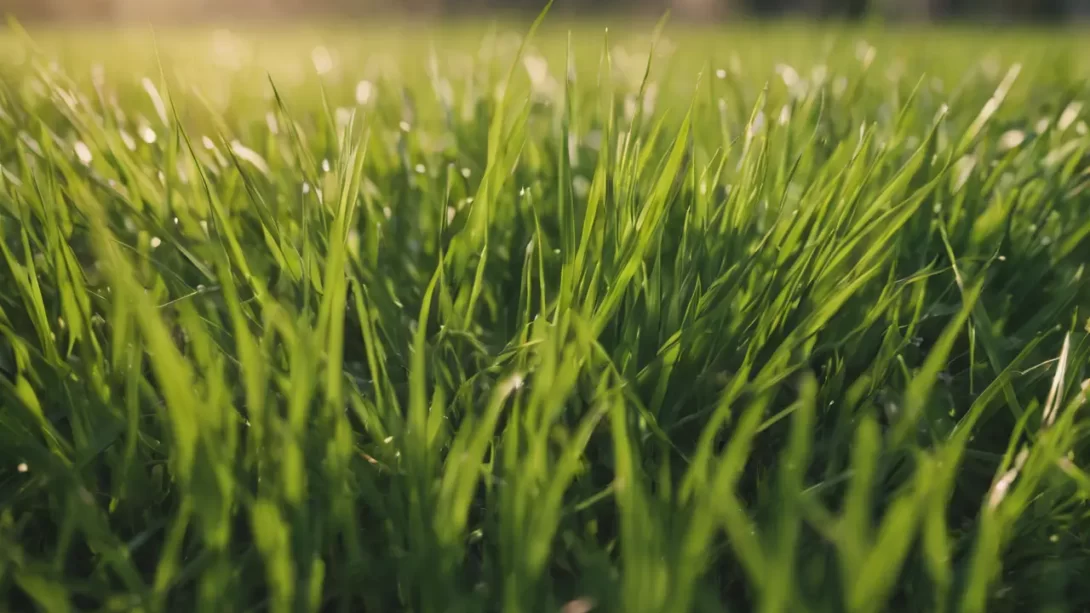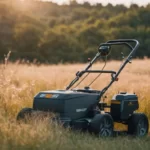St. Augustine grass, with its lush green hue and dense coverage, is a popular choice for lawns in warmer climates. However, homeowners and gardeners often find themselves asking a common question: Is St. Augustine grass available in seed form? This article delves into the characteristics of St. Augustine grass and explores the reasons behind the rarity of its seeds in the market.
St. Augustine Grass
St. Augustine grass, known scientifically as Stenotaphrum secundatum, is a warm-season turfgrass favored for its tolerance to heat and humidity. It has a coarse, broad-leaf texture with a deep green color and forms a thick, carpet-like lawn. This type of grass is especially popular in coastal regions due to its salt tolerance and ability to thrive in sandy soils. It’s commonly used in residential lawns, commercial landscapes, and public parks in warm climates, including the southern United States.
The Challenge with St. Augustine Grass Seeds
One of the unique aspects of St. Augustine grass is its difficulty in producing viable seeds. There are several reasons for this:
- Low Seed Viability: St. Augustine grass naturally produces seeds, but they have a very low germination rate. This makes the cultivation of St. Augustine grass from seed an unreliable method.
- Breeding Challenges: The grass is typically a sterile hybrid, which complicates efforts to produce fertile seeds. Breeding techniques that are successful with other types of grasses often don’t yield the same results with St. Augustine.
- Economic Factors: Due to the low success rate of seeds, most commercial growers focus on vegetative propagation methods, such as sod or plugs, which are more reliable and economically viable.
These challenges have led to a limited availability of St. Augustine grass seeds in the market, pushing gardeners and homeowners to explore other methods of establishing this grass in their lawns.
Common Methods of Propagating St. Augustine Grass
Given the challenges associated with St. Augustine grass seeds, other methods of propagation are commonly used. These include:
- Plugs: Small sections of sod are planted at intervals across the lawn. Plugs grow outward, eventually forming a continuous carpet of grass.
- Sod: This involves laying strips or squares of pre-grown St. Augustine grass directly onto the prepared soil. Sod provides an instant lawn and is the most popular method for establishing St. Augustine grass.
- Sprigging: Sprigs or stolons of St. Augustine grass are planted and take root, spreading to form a full lawn over time.
Each method has its advantages and is chosen based on specific landscaping needs and timelines.
Pros and Cons of Different Propagation Methods
When choosing between plugs, sod, and sprigging, it’s important to consider their respective advantages and disadvantages:
- Plugs: They are cost-effective and suitable for small areas but require more time for the lawn to become fully established.
- Sod: Provides instant coverage and reduces the risk of soil erosion. However, it is more expensive than other methods and requires significant preparation and maintenance.
- Sprigging: It is a more economical choice compared to sod but takes longer to establish and requires more care during the initial growth period.
Understanding these pros and cons can help homeowners and gardeners make the best choice for their lawn.
Where to Find St. Augustine Grass
For those looking to establish a St. Augustine lawn, here are some options for acquiring the grass:
- Local Nurseries and Garden Centers: Many carry sod or plugs of St. Augustine grass. It’s important to ensure the grass is healthy and free of pests and diseases.
- Specialty Turf Suppliers: These suppliers often offer a wider variety of St. Augustine grass types and can provide larger quantities, especially for sod.
Choosing the right supplier and ensuring the quality of the grass are key steps in successfully establishing a St. Augustine grass lawn.
Alternative Grass Types for Seeding
For those who prefer to start their lawn from seed, there are several alternatives to St. Augustine grass that offer a similar appearance and growing habits:
- Zoysia Grass: Known for its tolerance to heat and ability to form a dense, carpet-like turf, Zoysia is a good alternative. It’s available in seed form and is suitable for similar climates as St. Augustine.
- Bermuda Grass: Another warm-season grass, Bermuda is highly durable and can be grown from seed. It’s a common choice for lawns that require robust grass capable of withstanding heavy foot traffic.
- Centipede Grass: This is a low-maintenance grass that grows well in acidic soils, much like St. Augustine. It doesn’t require frequent mowing and is available in seed form.
Each of these grass types has unique characteristics and care requirements, so it’s important to choose one that matches your specific lawn needs and climate conditions.
Conclusion
St. Augustine grass, with its lush appearance and tolerance for warm, coastal climates, remains a popular choice for lawns. However, due to its low seed viability and propagation challenges, it is typically not available in seed form. For those looking to cultivate a St. Augustine lawn, the best options are using plugs, sod, or sprigging, each with its own set of pros and cons.
When considering St. Augustine grass for your lawn, it’s important to weigh these factors and choose the method that best suits your specific situation. For those who prefer seeding, alternatives like Zoysia, Bermuda, or Centipede grass can provide similar aesthetic and functional benefits.
In summary, while you may not find St. Augustine grass seeds, there are still many viable ways to achieve a beautiful St. Augustine lawn or a similar look with other grass types. With proper care and selection, you can enjoy a vibrant and healthy lawn that meets your landscaping goals.




